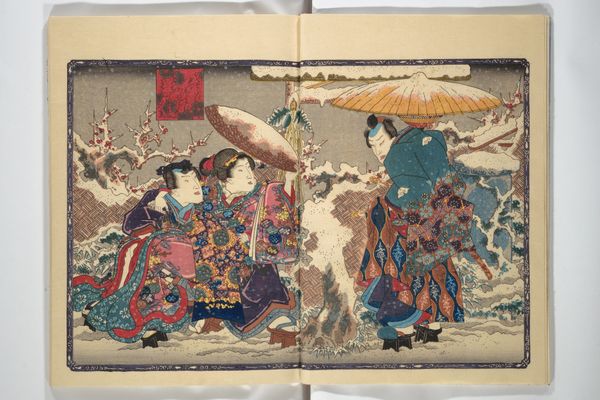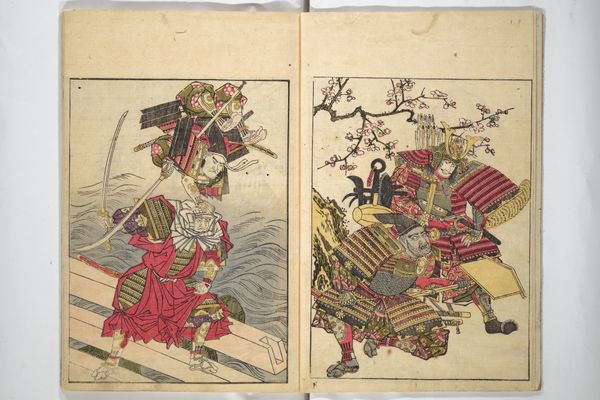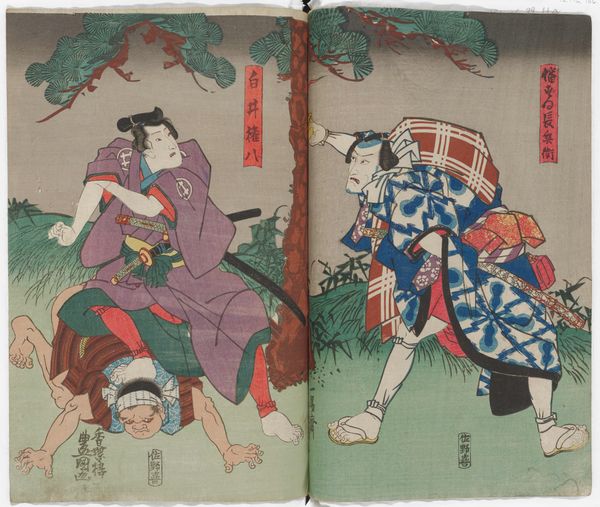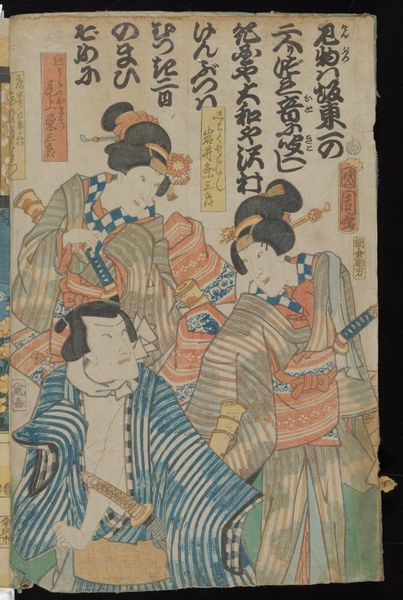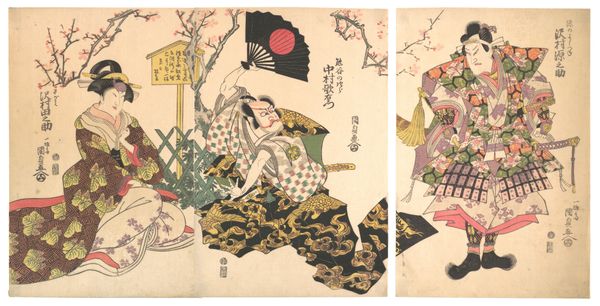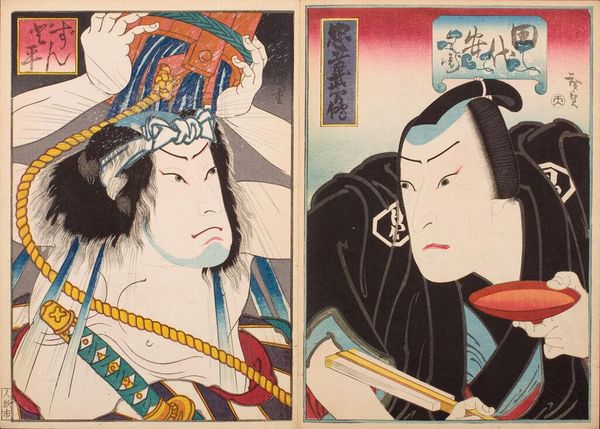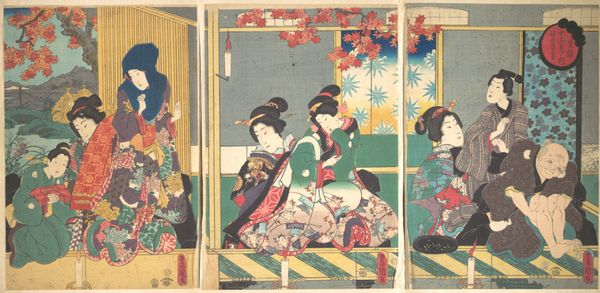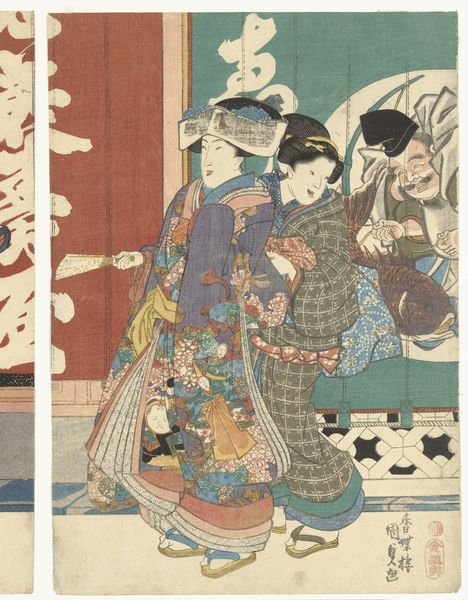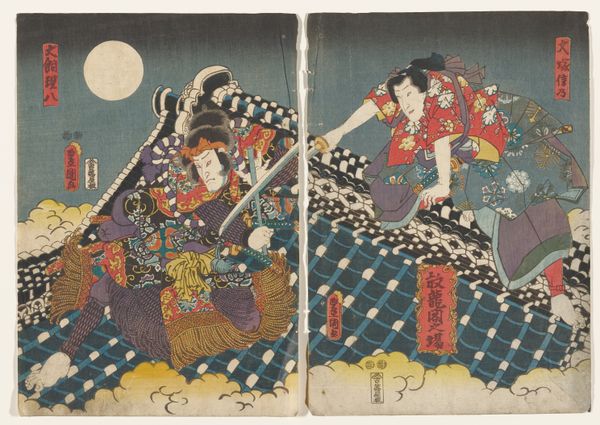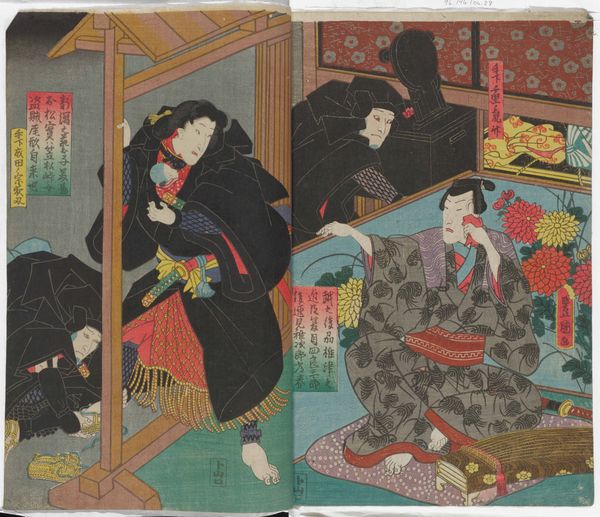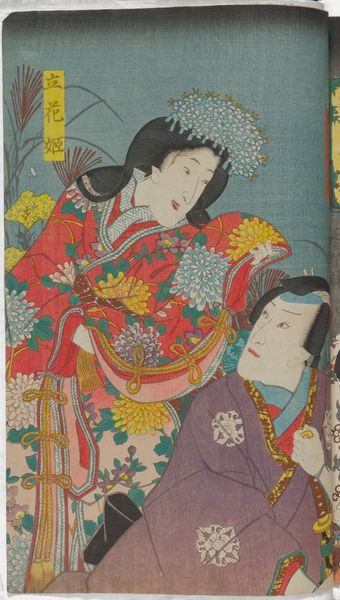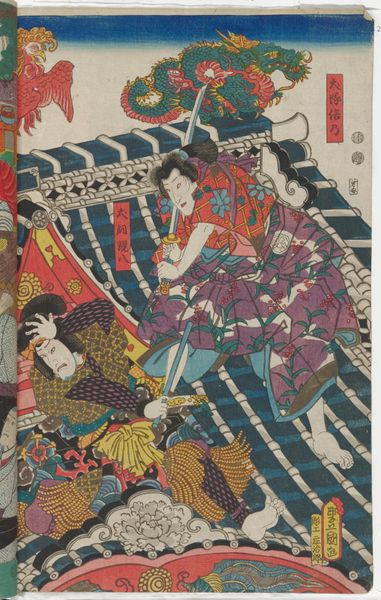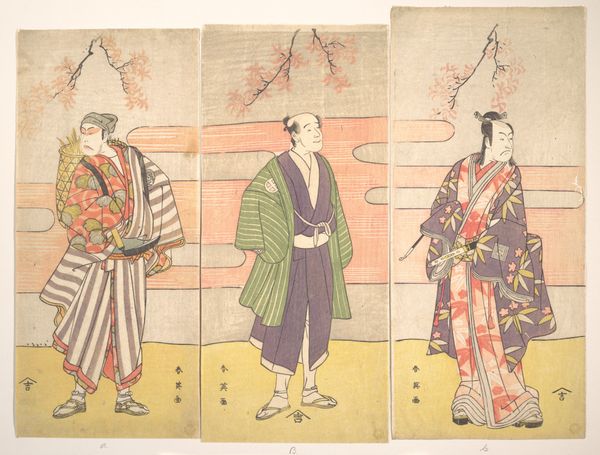
Actors Ichimura Uzaemon XIII as Inuta Kobungo Yasuyori (R) and Ichikawa Kodanji IV as Inukawa Shōsuke Yoshitō (L) 1850
0:00
0:00
print, ink, woodblock-print
#
portrait
# print
#
asian-art
#
ukiyo-e
#
figuration
#
ink
#
woodblock-print
Dimensions: 14 3/8 × 9 5/8 in. (36.5 × 24.5 cm) (image, sheet, vertical ōban diptych) each sheet
Copyright: Public Domain
Curator: Allow me to introduce "Actors Ichimura Uzaemon XIII as Inuta Kobungo Yasuyori (R) and Ichikawa Kodanji IV as Inukawa Shosuke Yoshito (L)", a striking woodblock print by Utagawa Kunisada, created around 1850. Editor: My initial impression? Dynamic tension! The contrasting colours—that brilliant, patterned purple against the more muted blues and blacks—really energises the composition. Curator: Absolutely. Kunisada was a leading designer of ukiyo-e prints, and here, we see a double portrait of Kabuki actors, figures who were incredibly popular in the Edo period. Their portrayal highlights not only their celebrity but also the cultural importance of theatre. Editor: I’m immediately drawn to the shapes; the way Kunisada employs line and flattened perspective really pushes the figures forward. And those repeating geometric patterns in the background give it an almost abstract feel. What can you tell us about these characters they're portraying? Curator: These actors depict characters from the popular epic novel *Nanso Satomi Hakkenden*, a sprawling narrative of samurai virtues. The prints like this functioned almost like publicity for theatrical performances. Consider how vital printed ephemera was to fostering interest. Editor: Look at the texture in their robes! It looks almost collaged but its carefully printed. The colour intensity also speaks volumes—almost a symbolic language of its own. Curator: Exactly, and those textual blocks and patterns aren't merely decorative but bear cultural significance too, revealing an understanding of contemporary trends. Each element adds another layer of meaning for contemporary audiences. Editor: Do you think it’s making some subtle commentary through formal means here? I keep thinking about this strange balance that somehow maintains itself. Curator: The actors themselves embody these complex performances. Each theatrical gesture performed on stage became almost like a cultural shorthand— gestures within and beyond theatre intersect in those Kabuki traditions! The success relies, in many respects, on historical circumstances, which were rapidly shifting when Kunisada was producing this work. Editor: Knowing a bit more, I really admire Kunisada’s confident approach in fusing visual spectacle, story, and something profound of what Kabuki might've meant in that time. Curator: Absolutely. This print opens a window into understanding Japanese cultural life during a dynamic period and its connection to artistic forms like printmaking.
